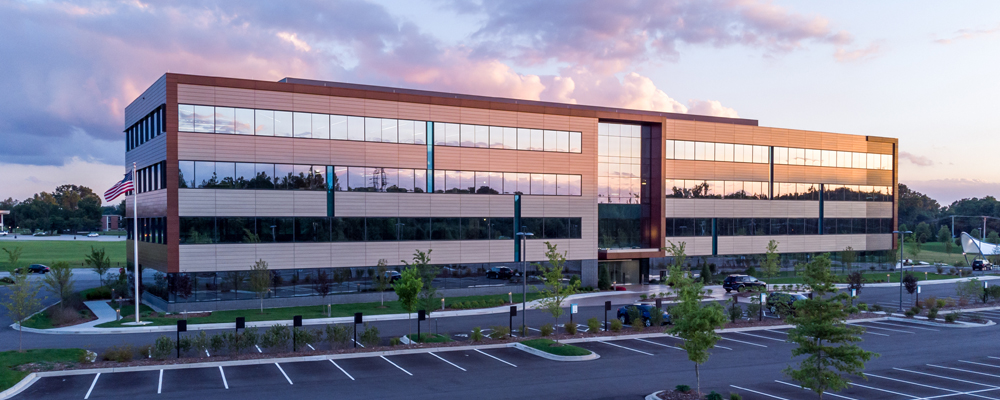Commercial real estate as a hedge against inflation is a long-standing rule of thumb. It’s an asset class that generates predictable cash flow, and some leases have the option of raising rents alongside the consumer price index.
Even now as inflation rates skyrocket to their highest point since the early 1980s, how commercial real estate will respond is complicated.
How Commercial Real Estate Responds to Inflation
Commercial real estate (CRE), like other tangible assets, tends to appreciate in value proportionate to inflation. This is proven although not a constant guarantee. For example, a Nareit study found that dividend increases for REITs outpaced inflation in 18 of the last 20 years.
There are several variables and compounding effects to consider.
For one, the type of inflation matters. Inflation as a response to strong economic growth is a good thing when it comes to CRE; inflation because of persistent unemployment and stagnant demand is not. In the current environment, inflation as it stands will be good for CRE; but then again, it depends on the property type and stakeholder.
Existing developed properties will have benefited from locking in historically low interest rates. In those instances, the property cost will remain the same, but the property value will appreciate. Owners will be more likely to hold their existing assets and enjoy the fruits of lower supply and higher demand.
Experts predict that the Fed will raise interest rates at least three times in 2022. The times of historically low interest rates are gone, and the current inflationary environment will persist well into the year; and perhaps, beyond.
Rising costs of material and labor will prove beneficial, too; there will be less competition for other properties coming to market. This also translates to increased demand for the existing developed properties. Short-term leases may prove especially beneficial.
Inflation – and its effect on CRE – is not the same for developers, buyers, and tenants. They will experience the rising cost of goods, fewer available units, and higher interest rates. More developers are likely to pause or adjust new projects.[1]
The exception is for tenants who were able to lock in a long-term lease with guaranteed low rent increases; they will see a similar benefit as owners of existing developed properties.[2]
Timing is critical. CRE as an inflation hedge is strategically better over the long-term: five, seven, or more years. As a short-term investment vehicle, it’s often misunderstood and won’t provide immediate protection in a larger investment portfolio.[3]
The Type of Real Estate Investment Matters
CRE doesn’t provide the same protections against inflation across all sectors. For example, apartment buildings and industrial real estate demonstrated the highest returns in private real estate. Retail used to be an effective protection against inflation because of the nature of its shorter-term leases; however, since COVID-19, more retail has moved online, and the market changed.
And one recent whitepaper found that inflation tends to help private CRE while hurting public REITs – like the effects on stock returns. Whitepaper authors posit that the compounding factor in these cases is liquidity. Private CRE tends to have less liquidity and as such is better protected during economic crises and inflation. On the flip side, public REITs tend to be more liquid and therefore would produce a better return when the market is up.
There’s also the impact of operational costs on property value. Some owners can pass these costs onto tenants through variable leases or other cost increases while other owners cannot. Labor costs will impact certain properties over others; hotels, for example.[4]
From an investment standpoint, CRE can be a good hedge against inflation; however, investors will need to ensure they don’t undervalue the investment or fail to capture future revenue.
Another Scenario
The other side to the coin is whether holding onto CRE as an investment will do more harm than good. Some investors may find that shifting their assets away from CRE is a strategy to avoid incurring extra costs, whether from maintenance and upkeep to higher interest rates for refinancing a building.
Signs of this change are already showing. In 2021, real estate stocks gained more than 43 percent as part of a record-high $809 billion in sales volume. Now, those same shares are falling compared to the broader market.
If interest rates rise because of other factors besides inflation, like if banks increase rates as a hedge against the risk of not being repaid, then real estate investments probably won’t perform as well. Indeed, there are other forces at play now that weren’t a factor in previous inflationary eras: persistent supply chain issues and unemployment, to name two.
Still, the only way that CRE as a broad category would lose its luster is if the ten-year rate on Treasury bonds would exceed three percent – more than one percent higher than it is as of this writing. “Until then the yields of properties are relatively attractive,” said Darrell Wheeler, a senior analyst of commercial mortgage-backed securities at Moody’s Analytics.
What’s Next?
Paul Fiorilla, writing for Commercial Property Executive, said that “There remains much to be learned about the impact of inflation on the economy and commercial real estate. One reason is that there are so many variables to performance. Another is that periods of high inflation have been relatively rare. The last such period was long ago when the economy and macroeconomic policy were different, so some of the lessons from that period may be less relevant today.”
Existing CRE owners will likely find it’s advantageous to sit and wait. They have the benefit of setting the terms and watching their property appreciate in value. Developers, builders, and tenants will want to consider ways to lock in costs where they can: buying materials up front, amending contracts, and negotiating lease terms where they can.
CRE investors may find this is an environment to capitalize on existing properties and investments. Property value will need to be weighed against rising costs. Asset class and CRE sector are vitally important. It’s also critical not to let one factor decide how an entire portfolio is allocated; that is, don’t let inflation be the sole driver of which assets to invest in.
For questions on how to manage the effects of inflation on commercial real estate, contact Ryan Paul, CPA, Partner on PBMares’ Construction and Real Estate Team.
[1] https://blog.naiop.org/2022/01/how-will-inflation-impact-commercial-real-estate/
[2] https://www.jdsupra.com/legalnews/commercial-real-estate-during-a-period-2434430/
[3] https://www.wealthmanagement.com/investment-strategies/inflation-fears-are-driving-more-investors-towards-commercial-real-estate
[4] https://www.wealthmanagement.com/investment-strategies/inflation-fears-are-driving-more-investors-towards-commercial-real-estate





